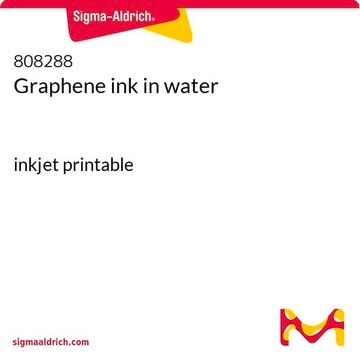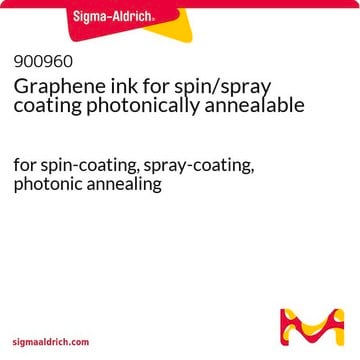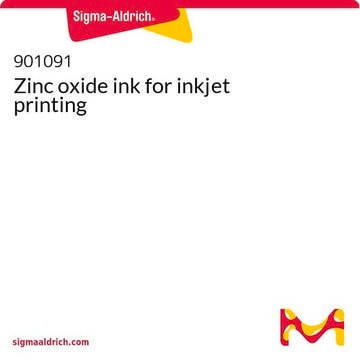901410
Hexagonal boron nitride ink
for inkjet printing
Synonim(y):
Hexagonal boron nitride dispersion, with ethyl cellulose in cyclohexanone and terpineol, hBN dispersion, hBN inkjet printable ink
About This Item
Polecane produkty
Poziom jakości
Postać
dispersion
skład
Solid content, 4.4-6.4%
charakterystyka ekologicznej alternatywy
Design for Energy Efficiency
Learn more about the Principles of Green Chemistry.
sustainability
Greener Alternative Product
kolor
white
wielkość cząstki
≤0.3 μm
napięcie powierzchniowe
30-35 dyn/cm
lepkość
6-15 cP (shear viscosity at 1000 s-1, 25 °C)
tw
213-218 °C (Terpineol)
gęstość
0.9-1.1 g/mL at 25 °C
kategoria ekologicznej alternatywy
InChI
1S/BN/c1-2
Klucz InChI
PZNSFCLAULLKQX-UHFFFAOYSA-N
Szukasz podobnych produktów? Odwiedź Przewodnik dotyczący porównywania produktów
Opis ogólny
Zastosowanie
Informacje prawne
Hasło ostrzegawcze
Danger
Zwroty wskazujące rodzaj zagrożenia
Zwroty wskazujące środki ostrożności
Klasyfikacja zagrożeń
Acute Tox. 4 Dermal - Acute Tox. 4 Inhalation - Acute Tox. 4 Oral - Eye Dam. 1 - Flam. Liq. 3 - Skin Irrit. 2 - STOT SE 3
Organy docelowe
Respiratory system
Kod klasy składowania
3 - Flammable liquids
Klasa zagrożenia wodnego (WGK)
WGK 3
Temperatura zapłonu (°F)
115.7 °F
Temperatura zapłonu (°C)
46.5 °C
Certyfikaty analizy (CoA)
Poszukaj Certyfikaty analizy (CoA), wpisując numer partii/serii produktów. Numery serii i partii można znaleźć na etykiecie produktu po słowach „seria” lub „partia”.
Masz już ten produkt?
Dokumenty związane z niedawno zakupionymi produktami zostały zamieszczone w Bibliotece dokumentów.
Klienci oglądali również te produkty
Produkty
Recent advancements in paper-based sensing platforms offer cost-effective clinical diagnostics with microfluidic channels and colorimetric or electrochemical detection zones.
Carbon-based Sustainable Organic Electronics (SOE) limit the use of critical elements and biodegrade at their end-of-life. This review offers insight on how structural and energy disorder in these materials influence device performance and includes evaluations of various transport models and their limitations.
Review on 1D vdWHs: Discusses materials, synthesis, optoelectronic applications, challenges, and future perspectives for 1D vdWH-based devices.
Przegląd 1D vdWH: Omawia materiały, syntezę, zastosowania optoelektroniczne, wyzwania i przyszłe perspektywy dla urządzeń opartych na 1D vdWH.
Nasz zespół naukowców ma doświadczenie we wszystkich obszarach badań, w tym w naukach przyrodniczych, materiałoznawstwie, syntezie chemicznej, chromatografii, analityce i wielu innych dziedzinach.
Skontaktuj się z zespołem ds. pomocy technicznej












